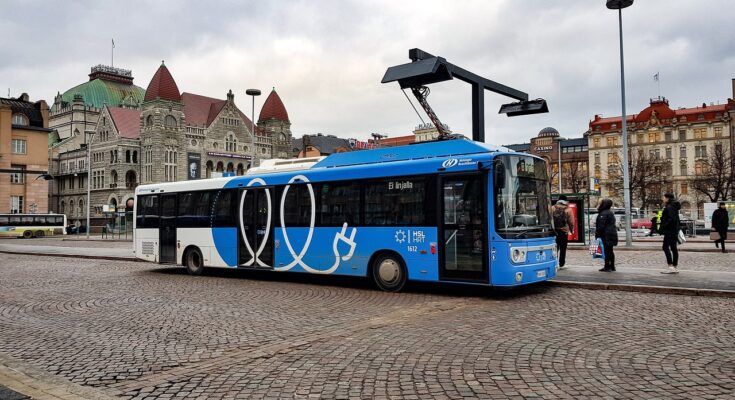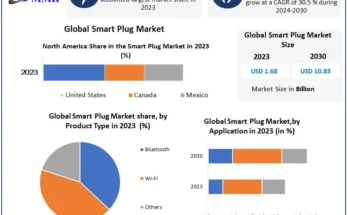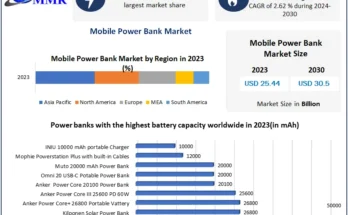Table of Contents
What Incentivizes Growth of the Electric Bus Market?. 3
Countries’ Commitment to Combat Climate Change. 3
Companies Urge to Position Themselves into Electric Bus Market Gaps. 4
Domino Effect to Encourage Sales of Electric Bus. 4
Where Electric Bus Market Companies Can Have Competitive Advantage?. 5
Low emission Technologies and long battery life. 5
Leveraging technology to Ensure safety. 5
Bus Trip Data and Energy Consumption Analysis. 5
Address the Upfront Cost of Electric Bus. 6
From Where Electric Bus Market Players Can Expect High ROIs in 2023-2033?. 6
Secret Sauce for Electric Bus Market Participants. 7
Body Content
The electric bus market is estimated to unlock a revenue potential of USD 105,808.15 million by 2028. Tax Breaks and Subsidies could favor electric bus market players. Markets in nascent stages have the potential to bring high ROIs on investment in planned mobility. Technological advancements are expected to reduce the prices of batteries by up to 40%. This is likely to drive electric bus penetration in the coming years.
Public Transit is paramount in planning urban infrastructure. Dynamics of public transport undergoing cusp of change in recent years. Modern transformations have been seen in the context of climate footprint. E-buses are at the forefront of the sustainable transport movement. It provides clean and efficient means of public transit. Electric buses are contributing to global environmental goals.
Urbanization is on the rise, which leads to an increase in congestion. Moreover, there is a surge in GHG emissions. Traditional fossil fuel buses contribute to air pollution. As a result, to create sustainable transit in cities electric buses are critical. E-buses create zero emissions and have minimal impact on the climate. These buses prevent air quality in urban areas- a climate win!
Countries are pushing their efforts to integrate e-buses in cities. These fleet solutions are noise-free. Their lower cost of operation and maintenance are unique selling factors. Transit agencies can save decent enough with the electric fleet. High-efficient electric buses are outperforming their natural gas counterparts.
Compared to traditional buses, electric buses are durable. Hence, they save cost. EV space has noticed rapid growth, leaving experts ecstatic with certain numbers. 2021 marked a 62% rise in EVs on roads. In response to the growing reputation, key producers have started to retool their production. They are aiming at a larger EV future.
What Incentivizes Growth of the Electric Bus Market?
Countries’ Commitment to Combat Climate Change
Early industry participants benefit in the form of climate gains. EV companies are gaining worth more than regular brands. Countries such as India and France are sketching large EV space. Foreseen to invite future public transit systems. This revolution to reduce urban air pollution. The UN environment program encourages these countries to develop regulations. It emphasizes policies for cities to expand public transport. These are estimated to ease the need for private cars. In developed countries- the US, Germany, Norway, France, and Sweden are leading markets for electric buses. In developing countries, only India and China have paid sufficient attention to electric buses.
European governments have been at the forefront of pushing the growth of EV space. EU countries have started renovating residential buildings in alignment with charging point facilities. Germany has invested USD 6.1 billion in electric vehicle charging installation. Norway provides 100% subsidies for the public charging framework. Norway comprises a total of 8% of EU public charging points. It makes up only 1% of the EU’s populace. Government support resulted in the deeper penetration of public EVs here.
Companies Urge to Position Themselves into Electric Bus Market Gaps
Transit causes about 22% of greenhouse gas emissions worldwide. It is flagged as the target for emission reduction. Endurance has gained traction across the globe. Countries are moving to green transport. Nations have encouraged the procurement of electric buses. Companies are getting grants and subsidies for the production of electric mobility solutions. These active steps by the government are expected to favor market growth.
Government steps such as tax breaks are in favor of electric bus market players. These offerings coupled with operating EV charging points in public places. Standardization policies are expected to improve interoperability. These efforts are likely to reshape electrified sustainable transit in the future. It is an indicative shift towards shared mobility where smart fleet options are palpable.
Domino Effect to Encourage Sales of Electric Bus Market
Mounting EV space coupled with increasing robust charging facilities. As a result, companies are expanding the charging facilities required for e-buses. Charging stations in public places are expected to bring an uptake in electric buses. As per a survey, there is a rise in public charging stations in the US.
There is a domino effect linked with the deployment of electric buses. Their introduction in one region encourages another region. It creates a sense of competition. These moves encourage cities to action. Cities and transit agencies are shifting towards green transport. Hybrid electric buses and plug-in buses are expected to gain traction. The battery-electric bus segment held a large share in 2020. It is expected to open lucrative space for electric bus companies.
Where Electric Bus Market Companies Can Have Competitive Advantage?
Low emission Technologies and long battery life
Determining energy consumption is essential for battery electric buses. At present, these buses have insufficient battery which requires more stops in between journeys to charge the vehicle. This is an even more daunting task if the network of transport is wide. A hunt for alternative fuels is going on. Methanol is used in fuel cells to produce electricity which powers buses. Methanol fuel can extend the range of electric buses.
Long battery life is necessary to increase the range of the fleet. A shorter range creates working issues while increasing the cost of maintenance. Significant planning is needed to tackle the battery life issue. Leading bus companies are committed to offering low-emission buses. They are offering electric power trains for big cities. These innovations are likely to bring more profit in the future. Lithium-ion batteries are suitable for heavy-duty vehicles. These batteries charge fast and are capable of long life.
Both electric buses and fuel cell vehicles are known for their quiet operations. These fleet options are suitable for densely populated regions. These are linked with a shared goal of sustainable transit.
Leveraging technology to Ensure safety
Real-time monitoring systems and CCTV cameras can enhance the trust of passengers. These safety measures will encourage the mass populace to travel via public transport. It will vitally reduce carbon emissions. It further resolves traffic congestion issues witnessed by several countries. Companies introduce thermal management systems to avoid overheating. Battery packs should be designed to offer multiple layers of protection.
Electric bus market players need to follow best practices to prevent accidents related to charging. Blind spot detection and collision avoidance systems could be a great addition to reducing the risk of accidents. Cybersecurity is crucial in electric buses. Bus onboard systems need strong prevention from cyber threats. Robust cyber measures are desired for safeguarding vehicle control systems.
Bus Trip Data and Energy Consumption Analysis
Energy consumption analysis tools will give insights into in-service efficiency. This will also aid in efficient bus trip management and charging halts. The demand for transport schedules for buses can be fixed. Buses have integrated LED displays to provide travel information. This could be further improved to map data for bus routes. It can display arrival times when the bus stops. Intercity buses and STU are segments foreseen to clock high daily usage. These buses are likely to penetrate to a level of 50% by the end of 2030. Businesses can expect high ROIs from these electric bus market segments. These segments can bring lucrative revenue with lower cost of ownership (TCO).
Address the Upfront Cost of the Electric Bus Market
The main challenge in urban transit planning is the high cost of EVs. Electric buses cost up to double compared to conventional variants. Industry players can utilize organic growth strategies to tackle price factors. Moreover, strategic partnerships with auto-ancillary partners could bring down the prices. Cost-effective batteries are needed for buses. It will further reduce the cost of electric buses.
Regional policies to develop a supportive environment for domestic companies. Several initiatives taken so far through tax cuts and subsidies. Universal access to energy was adopted as a sustainable development goal under SDG 2030. This encourages initiatives in the direction of developing charging facilities. Proving a lower total cost of ownership (TCO) compared to diesel buses. This can be a unique selling point for electric bus market participants.
From Where Electric Bus Market Players Can Expect High ROIs in 2023-2033?
Despite several challenges, electric vehicles are seen as a solution to air pollution. Countries that have already adopted E-buses are demonstrating valuable outcomes. These are likely to encourage other nations to design EV space. The Netherlands is the leading nation in Europe in terms of the adoption of electric buses. The Dutch e-bus market is at the forefront in Europe.
Asia Pacific electric bus market is projected to surpass USD 15,386.11 million. This region is likely to stay a hub for EV brands in the coming years. It is foreseen to grow with a CAGR of 20.2% from 2021 to 2028. China in particular has implemented policies to tackle emissions from transport. Strong support from the Chinese government has propelled competition in the electric bus industry.
Asia Pacific region has a robust producing ecosystem. This plays a significant role in the adoption of electric buses in public spaces. Local companies are investing in battery electric bus production driving them decent profit. A competitive market landscape is visible in battery technology. Financial incentives, standards, and governing support encourage the sales of electric buses in this region.
India is in a nascent stage electric bus market. Escalating urbanization adds to up need for mobility solutions. Public transport in the region has space for electric buses in transport. Owing to the lack of high-quality public infrastructure this region attracting investment in the electric bus market.
Secret Sauce for Electric Bus Market Participants
Companies need to explore international markets where there is growing interest in electric buses as a means of market diversification. To capitalize on opportunities companies should stay agile and invest in research and development. Evolving market demands should be catered to by manufacturers along with addressing cost concerns for long-term success.
Prioritized sustainability, reduced emissions, and escalating adoption are projected to bring lucrative opportunities for electric bus companies. With the integration of automation, we expect more efficient public transit in the future.




